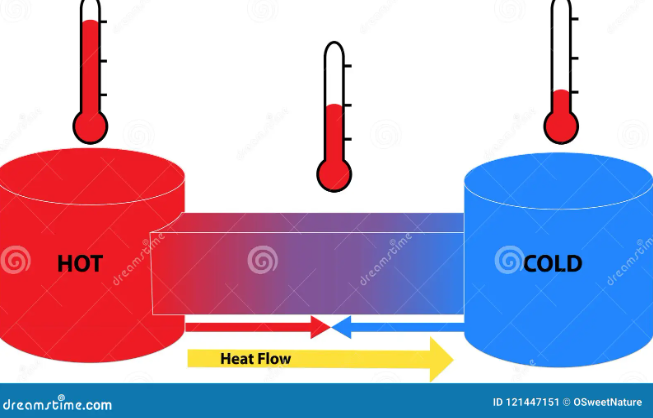Increasing Heat Transfer Between Two Objects: Actions That Make a Difference
Heat transfer plays a crucial role in various aspects of our daily lives, from cooking food to maintaining comfortable indoor temperatures. Understanding how to enhance heat transfer between two objects can lead to more efficient processes and improved energy efficiency. In this article, we will explore several actions that can increase heat transfer between two objects, shedding light on practical ways to maximize thermal exchange.

Heat Tranfer
1. Introduction to Heat Transfer
a. Heat Transfer Basics: Heat transfer is the process of thermal energy transfer from one object or substance to another. It occurs through three main mechanisms: conduction, convection, and radiation.
b. Importance of Heat Transfer: Efficient heat transfer is essential for numerous applications, including cooking, cooling systems, industrial processes, and energy conservation.
2. Action 1: Increasing Surface Area
a. Surface Area and Heat Transfer: The larger the surface area, the more opportunities for heat transfer to occur. Increasing the surface area of an object in contact with another enhances heat exchange between the two.
b. Practical Applications: Examples include using finned heat sinks in electronic devices or increasing the surface area of heat exchanger tubes to enhance heat transfer in industrial processes.
3. Action 2: Enhancing Thermal Conductivity
a. Understanding Thermal Conductivity: Thermal conductivity refers to a material's ability to conduct heat. Materials with higher thermal conductivity facilitate faster heat transfer.
b. Material Selection: Choosing materials with higher thermal conductivity, such as copper or aluminum, for heat-conducting components can improve heat transfer efficiency.
4. Action 3: Improving Contact and Pressure
a. Optimal Contact: Ensuring maximum contact between two objects promotes better heat transfer. Reducing air gaps or using thermal conductive compounds improves thermal contact.
b. Applying Pressure: Applying pressure between the objects can improve contact and, subsequently, heat transfer. For example, using clamps or thermal paste in electronic cooling applications.
5. Action 4: Increasing Temperature Difference
a. Temperature Difference and Heat Transfer: Heat transfer is directly proportional to the temperature difference between two objects. Increasing the temperature gradient enhances heat flow.
b. Differential Heating: Employing heating elements or using temperature control mechanisms to create a significant temperature difference can boost heat transfer.
6. Action 5: Utilizing Forced Convection
a. Understanding Forced Convection: Forced convection involves the use of external means, such as fans or pumps, to enhance heat transfer through fluid flow.
b. Applications: Examples include using fans in computer cooling systems or employing pumps in industrial heat exchangers to improve fluid circulation and heat transfer.
7. Action 6: Employing Radiant Heat Transfer
a. Radiant Heat Transfer: Radiant heat transfer occurs through electromagnetic waves. Utilizing reflective surfaces or radiant barriers can redirect and enhance heat transfer.
b. Examples: Using reflective insulation materials in buildings or employing reflective coatings in solar panels can optimize radiant heat transfer.

Heat Flow
In conclusion, several actions can increase heat transfer between two objects, optimizing thermal exchange and improving energy efficiency. By increasing surface area, enhancing thermal conductivity, improving contact and pressure, increasing temperature difference, utilizing forced convection, and employing radiant heat transfer, heat transfer efficiency can be significantly enhanced.
Understanding and applying these principles can lead to more efficient cooling systems, improved industrial processes, and reduced energy consumption. By harnessing the power of heat transfer, we can create a more sustainable and environmentally friendly future.